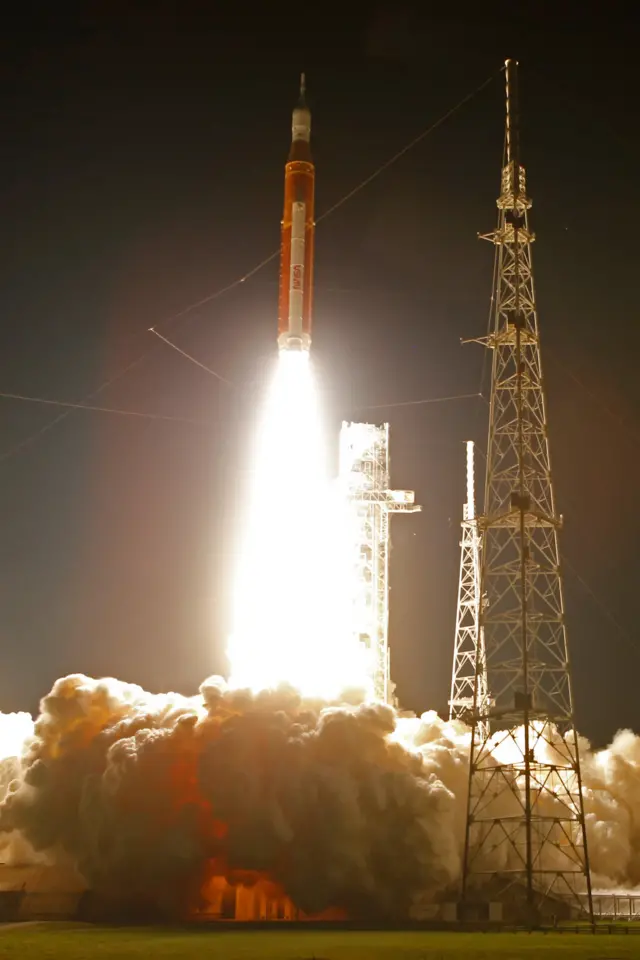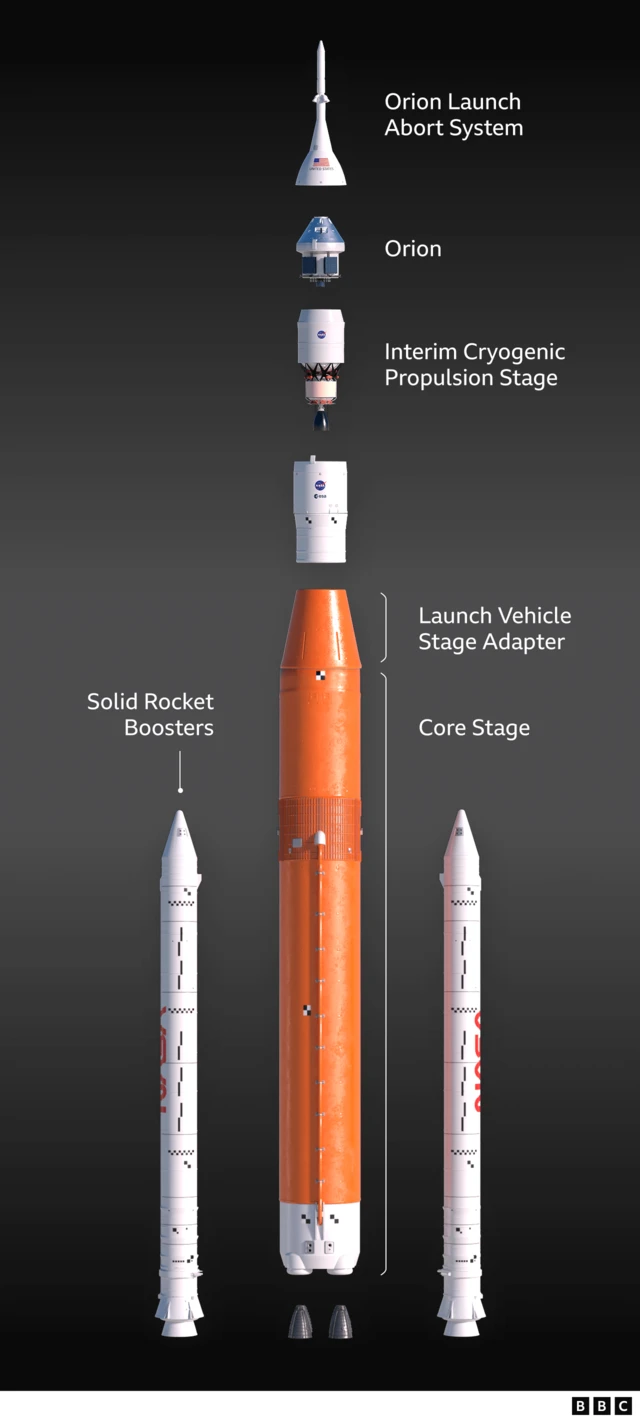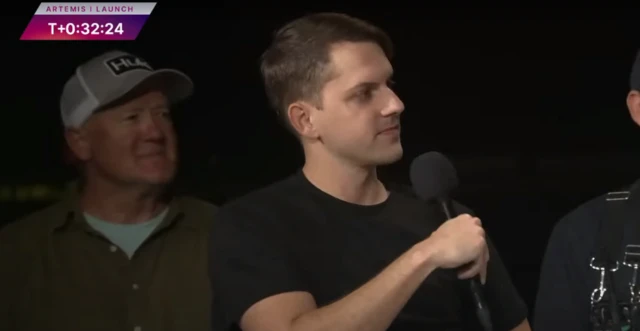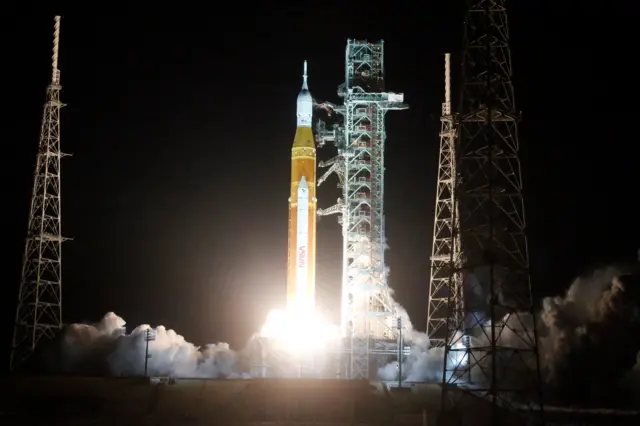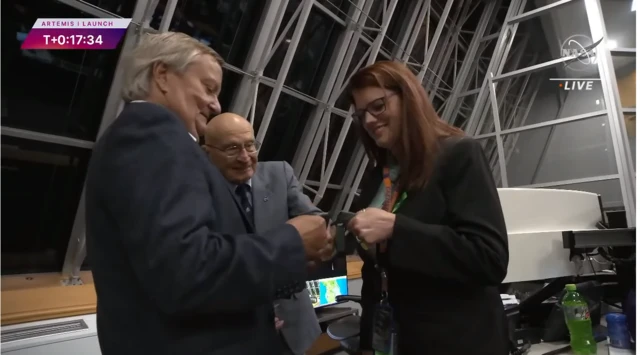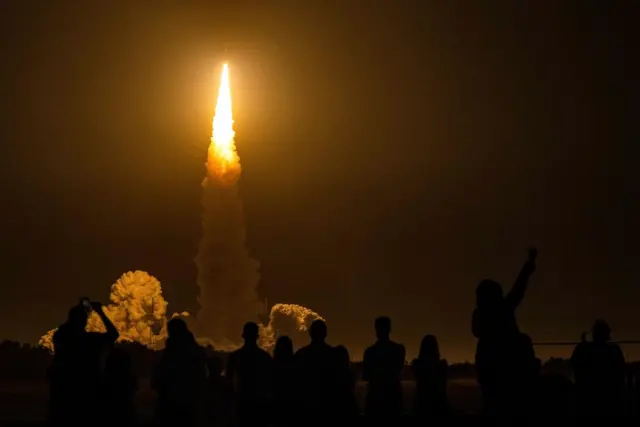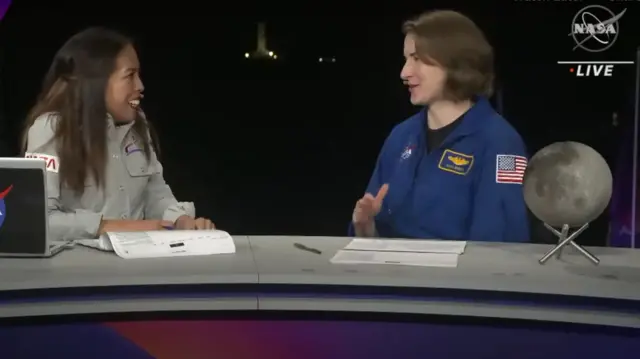Thank you for joining uspublished at 09:33 GMT 16 November 2022
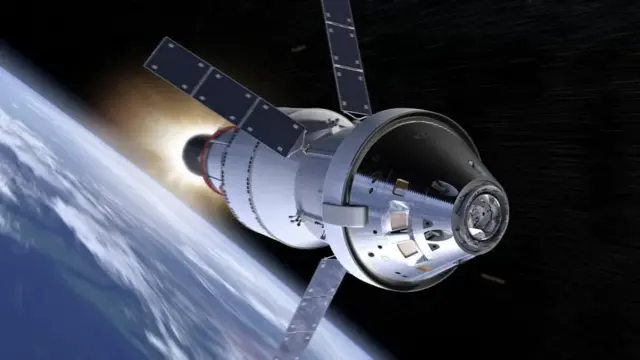 Image source, Nasa
Image source, NasaArtwork: The upper-stage of the rocket put the Orion capsule on a path to the Moon
We're going to be closing our live coverage shortly, as the Orion capsule heads towards the Moon.
But before we go - here's a recap.
- The American space agency, Nasa, has launched the most powerful rocket ever built
- The hundred-metre-tall vehicle blasted off at 01:47 local time (06:47 GMT) on its debut flight from Florida's Kennedy Space Center to send a unmanned capsule around the Moon
- The Artemis I mission is a test of the technologies that will take astronauts back to the lunar surface later this decade, after an absence of more than 50 years
- The Orion capsule will come back in roughly 26 days, according to Nasa. That gives an expected splashdown date of 11 December
- The aim for that splashdown is the Pacific Ocean - just off the coast of San Diego, California.
Thanks very much for joining us. You can read our main story here.

